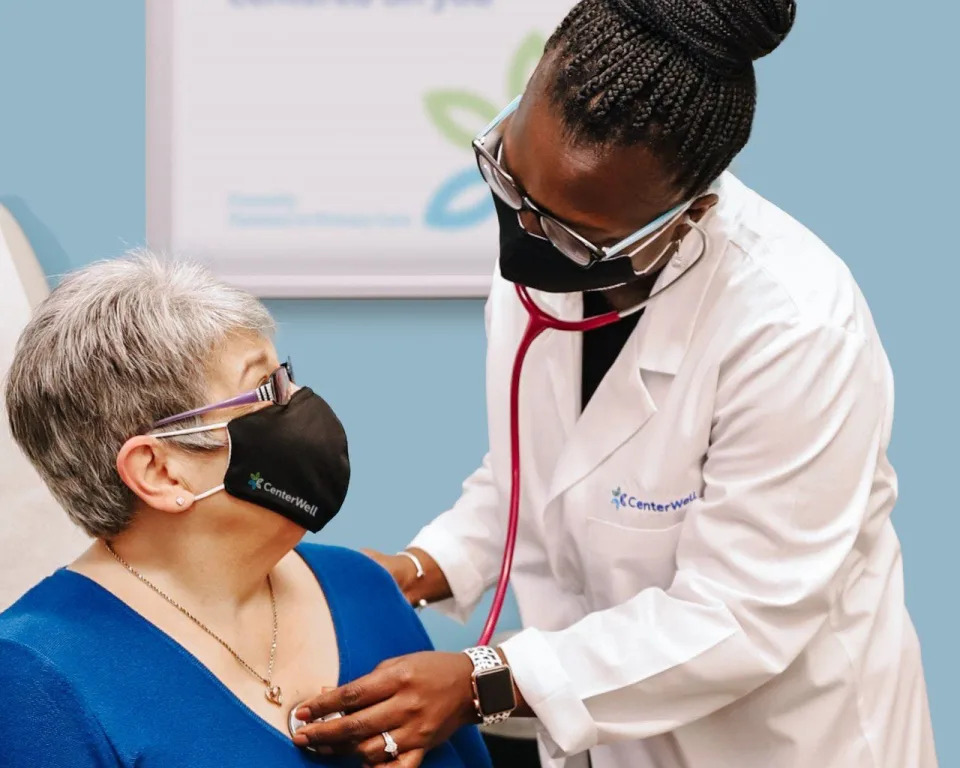No one would have guessed that in retirement, Judi and David Koncak would be nearly out of money and unable to leave their kids much more than a pittance.
They’re both college graduates. David, 84, had a successful business that allowed Judi to stop teaching to stay home and raise their two children. They traveled, owned cars and a home, sent their two kids to college and saved for retirement.
“I thought we’d spend our golden years sitting on a beach in Hawaii with Mai Tais, even if in wheelchairs,” Judi Koncak, 83, said.
Instead, her husband had a stroke, surgeries, and prostate cancer – all of which helped deplete their savings and more.
Now she’s back at work part time earning about $15 an hour, selling items on Marketplace “for pennies on the dollar,” and turning to the nonprofit, The Senior Source, in Dallas to find help to pay her bills.
With all their savings gone, she suspects their “house is all I’ll have left” for her kids, and she’s “not even sure until we get repairs done if they would even want it. Whatever they can get out of it, I don’t know.”
Health care or inheritance?
If the Koncaks’ struggles with health care costs as older adults sound familiar, it’s because they are. Even with insurance, Americans struggle to pay for expenses like premiums, copayments, coinsurance, and uncovered health services.
As a result, the significant wealth transfer from baby boomers to younger generations that researchers have predicted may not be so great after all, as much of older Americans’ money goes toward health care.

One-third of Medicare beneficiaries, including more than half under age 65, said it was difficult to afford health care, according to a survey of 7,873 adults from April through July last year by the Commonwealth Fund, a nonprofit focused on health care issues. More than 20%, including over 40% of those under age 65, said health care expenses made it harder for them to afford food and utilities. And they’ve delayed or skipped necessary care.
Kathy Kiersted, 64, said she and her husband, Jose, 62, who live in Arizona, pay more than $1,500 monthly in health premiums. She was laid off from Amazon and had to buy COBRA (Consolidated Omnibus Budget Reconciliation Act) insurance because policies from the Health Insurance Marketplace were even more expensive.
“I even spoke to brokers, but costs were comparable to COBRA but with much higher deductibles,” she said. “I really don’t know how people afford health care. It’s almost better not to have anything and have Access health care” she said, referring to Arizona’s Medicaid program, which pays for most everything if you are very low income.
Kiersted consults part time to help pay for health care. She hasn’t been able to find full-time work, she believes, due to her age. Her daughter is getting married soon, but she won’t be able to help pay for the wedding.
“She knows, but as a mom, it’s heartbreaking,” she said.
“We’re the middle class and upper-middle class,” Kiersted said. “We pay our bills and have a little extra, but we’re all spending a lot in health care (so) that we’re not in a position to help or leave money” to children.
Koncak, of Texas, points out the cumulative cost of small bills.
Copays, “even just at $20 each time, because we go to so many different things – occupational therapy, physical therapy, oncologist,” add up fast, too, she said. Medicare also doesn’t cover dental or vision, so those are out-of-pocket expenses.
“Every senior needs glasses,” she said. “And dental.”
Dispelling the myth of the “great wealth transfer”
With all baby boomers (born 1946 to 1964) becoming at least 65 by 2030 and owning 52.8% of the wealth in this country, researchers expect a great generational wealth transfer of up to $84 trillion in assets over the next 20 years.
Generation X (1965-1980), millennials (1981-1996) and Gen Z (1997-2012) are expected to inherit $72 trillion of that amount. About $12 trillion is expected to go to charities.
Most millennials expect to inherit at least $350,000 from their parents or other family members, Schein, of the Advanced Consulting Group, wrote in the Nationwide Retirement Institute research report.
But more than 25% of Americans believe paying for long-term care will diminish their children’s inheritance, a 2023 Nationwide Retirement Institute survey of 1,439 boomers, Gen Xers and millennials showed.
How expensive is health care?
Since 2000, the inflation-adjusted price of medical care, including services provided, insurance, drugs, and medical equipment, has increased by over 114%, outpacing the 81% rise in overall prices, nonprofit healthcare researcher KFF said.
On average, the annual per-person cost of home care in 2021 was roughly $42,000 (for 30 hours of weekly care at $27 per hour), more than 20% higher than in 2019, AARP said. The average annual cost of nursing home care is more than $108,000 for a private room, more than twice the typical annual income for people 65 or older.
And with longer life expectancy, an even higher amount of retiree assets will go toward paying for medical care and insurance premiums.
Sixty percent of health care costs come after the age of 65, and if you’re over 85, you use three times more health care services than people between 65 and 75, said Josh Gordon, director of health policy for the Committee for a Responsible Federal Budget, a nonprofit public policy organization.

Can people avoid going broke to leave a legacy?
If you’re still in your 50s and pretty healthy, you might be able to buy long-term care insurance to help mitigate the costliest health care expense, said Justin Stivers, financial adviser and founding attorney at Stivers Law. If you’re older than that, it may be too expensive.
About six to 10 years before retirement, you could explore guaranteed income using an annuity, said Chad Druvenga, chief executive of insurance brokerage firm CBS Brokerage. An annuity could provide extra monthly income during retirement.
From there, you’d only have Medicare or self-pay options, which is where many boomers like Koncak and Kiersted have ended up already.
Medicaid for low-income people would cover most everything, including long-term care and in some cases, even dental and vision. Each state has its own rules for eligibility and coverage.
“It is so sad… unless you’re in a place where everything is free for you or you have money to pay,” Kiersted said. “But we’re stuck in the middle. There’s no middle class, either you’re upper class or lower class.”
Children from high-net wealth families will come out of this generational wealth transfer with money, but “that’s an upper-class thing, not afforded to every class anymore,” she said.
What are people left to do if they’re already strapped?
In addition to part-time work, the Koncak’s 24-year-old grandson moved in, pays a modest rent and helps with his grandfather’s care. Koncak already sold her car and has been selling old dishes from her mother and things from her husband’s shuttered business. She hasn’t ruled out that she may have to sell her jewelry.
“I don’t want to sell my jewelry,” she said. “I never dreamed I would have to do that, but I might have to. We only have so much money coming in, and we’ve used up our nest egg.”
Kiersted, meanwhile, said “I can’t even plan that far out because it’s so depressing. Health care is the biggest stress on finances for both of us. We’re grateful we can take care now, but the future scares me.”
This article originally appeared on USA TODAY








